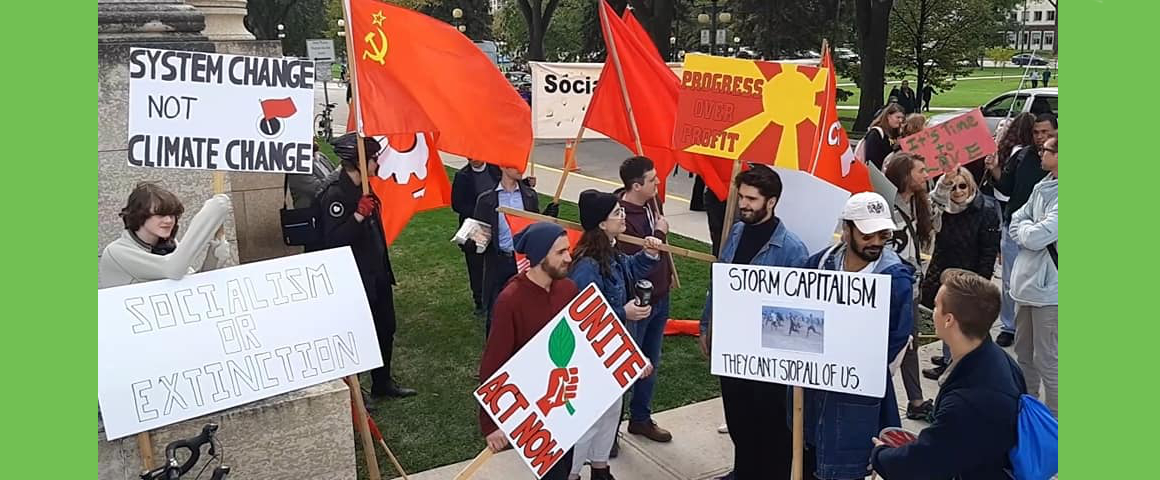By Graham Holton
A tipping point is a moment when things change so much there’s no going back. Climate tipping points are the critical thresholds at which a tiny perturbation can seriously change our global climate and environmental systems. Reaching a tipping point will cause a dramatic impact on the climatic and environmental systems that we rely on for our daily lives and for societies to function. Crossing these points cannot be counteracted by more action. Shifts in the earth’s environmental system, such as global sea-level rise, will have devastating irreversible changes.
Numerous scientific papers and reports conclude that climate tipping points are fast approaching. A study by Daniel Zarrilli, Special Advisor for Climate and Sustainability at Columbia University, finds that once the earth comes close to a climatic tipping point, some changes in the climate will be irreversible. For example, the Atlantic Meridional Overturning Current regulates our climate. If it shuts down it will have “massive social and economic consequences.”
In 2008, the first major assessment of climatic changes identified nine tipping points, involving polar ice sheets, oceanic currents and the major rain forests around the world. In 2021 Katharyn Duffy of Northern Arizona University mapped the relationship between increasing temperatures and carbon uptake in the Amazon’s forests. Her team examined twenty years of data on the transfer of carbon dioxide between plants, land and the atmosphere. At higher temperatures, the amount of carbon dioxide absorbed by plants through photosynthesis declines sharply, whilst the carbon dioxide released continues to rise, producing far more CO2 in the atmosphere. The thermal maximum for photosynthesis was exceeded in recent hot periods.
In 2022 the World Economic Forum examined the results of more than 200 studies from the past fifteen years, concluding that there are five tipping points of serious concern. With global warming now at 1.2°C, four of these five will be reached if global warming exceeds 1.5°C. Every fraction of a degree makes this outcome more likely, but not yet inevitable. Current levels of greenhouse gas emissions risk triggering climate tipping points.
Since the 18th century, humans have increased atmospheric methane concentrations by over 150 percent and carbon dioxide by over 50 per cent. A report by the United States Environmental Protection Agency (EPA) in 2016 concluded that carbon dioxide causes three quarters of all global warming and will take thousands of years to be fully absorbed by the carbon cycle.
Australian climate scientist Will Steffen and his colleagues have said in 2022 that there are “ample reasons to suspect that climate change could result in a global catastrophe.” David Armstrong McKay of Stockholm University has shown that global warming of 1 degree Celsius would risk triggering six tipping points. A major tipping point is the Greenland Ice Sheet, with Greenland and Antarctica losing ice six times faster than 30 years ago. The melting of those ice sheets is the largest contributor to sea-level rise.
Other tipping points include West Antarctic Ice Sheet collapse, the ocean circulation in the polar region of the North Atlantic, coral reef die-off in the low latitudes, the sudden thawing of permafrost in the northern regions, and abrupt sea ice loss in the Barents Sea.
The OECD report “Climate Tipping Points: Insights for Effective Policy Action” concludes that to stop reaching these tipping-points, we must drastically cut greenhouse gas emissions through enhanced Nationally Determined Contributions (NDCs), which are at the heart of the Paris Agreement.
Following the Agreement will accelerate transformations towards carbon net-zero and enable countries to adapt to the impact of climatic changes. Given the potential for the catastrophic impact associated with our changing climate system’s tipping points, not implementing the strategies of the Agreement could lead to immeasurable economic and environmental collapse in the near future.
The earth’s tipping points are interlinked, producing cascading impacts of serious concern. For example, the extinction of a strongly connected species in a given ecosystem can trigger cascading extinctions, leading to an ecosystem’s collapse. Jared Diamond argues in Collapse: How Societies Choose to Fail or Succeed that the removal of the forest cover of Easter Island (Rapa Nui) led to the collapse of its ecosystem with a devastating impact on its human population. All environmental systems are interconnected. If one system fails, it places added pressure on other systems to collapse.
These findings are confirmed by the “Interconnected Disasters Report 2023” published by the United Nations University, Institute for Environment and Human Security, which analyzed six interconnected tipping points, representing immediate and increasing risks across the world. The surpassing of these thresholds will have dire consequences for humans, animals and the environment.
We are now moving close to the brink of multiple risk tipping points. Urgent action is needed to avoid crossing these tipping points and to prepare for the coming consequences. Fundamental changes are required to save our planet, the only planet known to have life, from a potential catastrophe.
We need serious action on climate change now. Capitalism is not delivering that serious action.
Guardian (Australia)
Support socialist media!
If you found this article useful, please consider donating to People’s Voice or purchasing a subscription so that you get every issue of Canada’s leading socialist publication delivered to your door or inbox!
For over 100 years, we have been 100% reader-supported, with no corporate or government funding.




